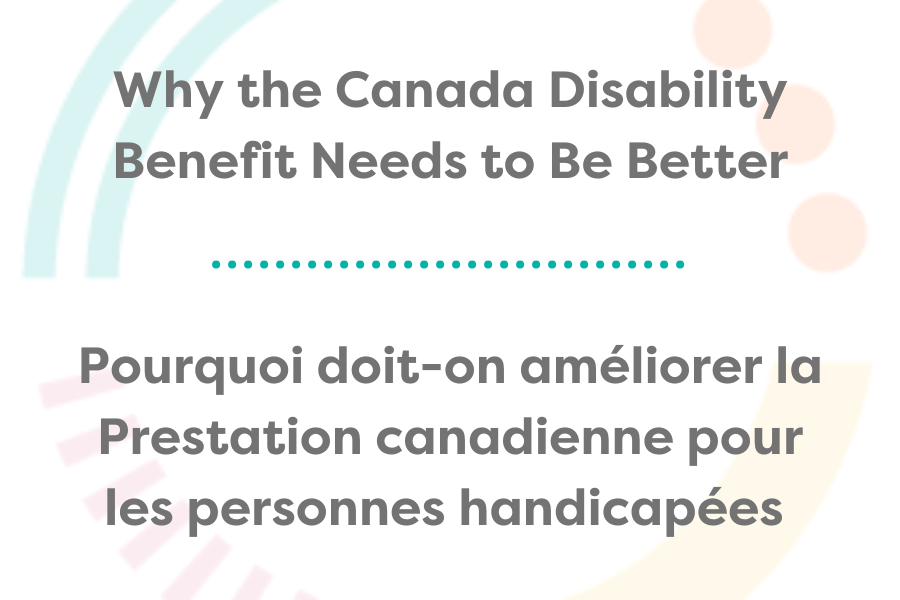
On March 12, 2025, the federal government approved the final regulations for the Canada Disability Benefit (CDB), which will take effect on May 15, 2025. Inclusion Canada has raised significant concerns about the draft regulations, emphasizing that they fall far short of addressing the poverty faced by people with disabilities.
Despite Inclusion Canada’s advocacy, the final regulations did not incorporate key recommendations, including increasing the benefit, decreasing the income threshold to be eligible, and expanding eligibility beyond the Disability Tax Credit (DTC).
We urge all Canadians to engage federal election candidates to commit to do more to improve the CDB, erase poverty and increase the financial security for people with disabilities.
To learn more visit: https://inclusioncanada.ca/2024/11/22/why-the-cdb-needs-to-be-better/
—
Increase the Benefit Amount: the CDB must be enough to help people with disabilities live above the poverty line.
- Current Regulations: The maximum remains at $2,400 per year ($200/month). With the government citing fiscal restraints.
- What We Want to See Next: A minimum of $1,393/month, equal to the Guaranteed Income Supplement (GIS) for seniors, plus 30% to account for the extra costs of living with a disability.
Broaden Eligibility: People should automatically get the CDB if they already receive other disability-related benefits.
- Current Regulations: Eligibility remains tied to the DTC. This means you must qualify for the DTC to get the CDB. The federal government has acknowledged the accessibility concerns with this approach, as many people with a disability who apply for the DTC do not qualify. They have indicated they will continue to consider the possibility of changes to the CDB program after it is launched, including options to simplify the application processes for both DTC and the CDB.
- What We Want To See Next: Expanding eligibility beyond the Disability Tax Credit (DTC) and allowing people who already receive disability-related benefits from provincial/territorial programs to automatically qualify for the CDB. This would make it easier for people to get the help they need.
Individual Income, Not Household Income: The CDB should be based on a person’s own income, not the income of the people they live with.
- Current Regulations: The benefit is based on household income.
- What We Want to See Next: Basing the benefit on individual income, not household income, to prevent financial dependence on family members.
Raise the Income Threshold and the Working Income Exemption: These limits must be above the poverty line and take the real costs of living with a disability into account.
- Current Regulations: The income thresholds remain unchanged, at $23,000/year for a single individual or $32,500/year for a couple
- What We Want To See Next: Increasing the income threshold to $35,000, to align with the Market Basket Measure plus a 30% adjustment for the additional cost of disability.
No Claw backs/No reductions: The CDB has to add to other benefits, not take them away. This includes provincial benefits.
- Current Regulations: The regulations do not explicitly prevent claw backs by provinces/territories, but the government has encouraged coordination with other programs.
- What We Want to See: We advocated for no claw backs, and for the benefit to be stackable with other federal, provincial, and territorial programs. The CDB should be treated as exempt unearned income by social assistance programs
Note: The Government of New Brunswick has indicated they will not claw back (reduce) any provincial benefits for those who are eligible to receive the CDB